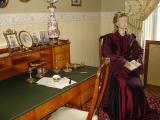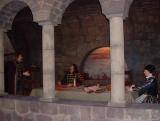2026. January 16. Friday
Ferenc Kubinyi Museum - Szécsény

|
Address: 3170, Szécsény Ady Endre u. 7.
Phone number: (32) 370-143
E-mail: kubinyi.muzeum@gmail.com
Opening hours: Tue-Fri 10-16, Sat-Sun 10-18
|
István Koháry began renovating the outer walls and the castle building in 1960. The lord lieutenant János Forgách and his wife, Margit Cziráky bought back most of the estate from Koháry by 1739. In 1753 the youngest son of János Forgách, Zsigmong inherited the estate. The Szécsény Castle was rebuilt in the baroque style in 1750-1760, probably by Zsigmond.


